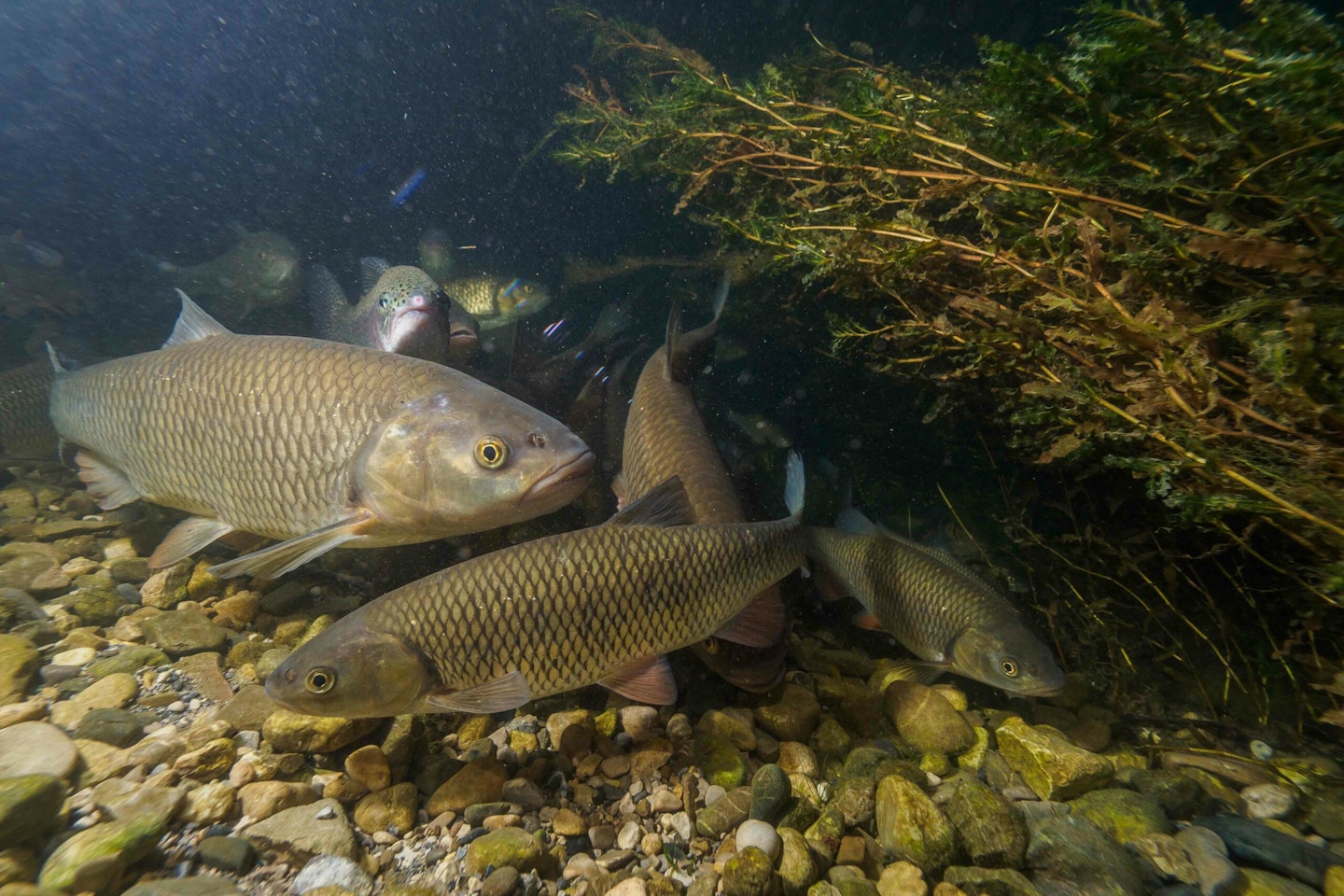While our ancestors might have assumed that fish were slow-witted creatures with scant regard for their neighbours, the truth is far more complex.
From underwater filming and scientific studies, we now know that fish maintain a sophisticated coexistence with each other, showing varied and surprising behaviours. But which fish are the most and least sociable, and how can we use this to our advantage?

Signals and safety in numbers
Fish such as roach, dace and bream can form shoals that are hundreds strong, but why gather in such numbers? The most obvious factor is shared security.
Most of the time predators pick out individual fish, making a loner vulnerable. A large school of fish represents a shimmering, confusing mass, while dozens of eyes are far more likely to spot danger, or indeed opportunity such as a new food source.
It can be fascinating to watch the bonds and interactions between fish in the same shoal, which begin when the fish are tiny fry. Depending on levels of threat or reward, for example, fish will form tighter or looser groupings, spreading out to graze or clustering to resist an attacker.
Besides obvious social signals, such as flashing or flaring their fins to warn of danger or stimulate spawning activity, fish also have subtler means to do so. In quite a few species, smell – or, more specifically, the release of hormones – is also used. So-called ‘Schreckstoff’, first discovered in minnows, is one such example of a chemical alarm signal.
It has rapid effects on a shoal of fish, which will stop feeding and shoal more tightly as a predator approaches, for instance.
Other examples also show social behaviour at stake.
Smaller fish like rudd sometimes appear to chase or ‘play’ with each other, while some observers even believe that larger fish like bream or tench might roll or jump to reveal the location of food to their shoal mates.
Visual signs and smells are not the whole story, either, because researchers are also discovering more and more ways that fish communicate using sound. From cod and gurnards, to chub in freshwater settings, quite a few fish are capable of using their mouths, throat teeth or even swim bladders to create croaking or clicking sounds!

Competition and pecking order
Whether fish have a “pecking order” is another interesting social aspect. While it’s often disputed whether they have a strict hierarchy, fish of different ages and sizes show interesting behaviours and an awareness of their own niche in the world.
Where fish such as perch or trout occupy the same pool, for example, the bigger specimens have an uncanny ability to hog the prime spot, offering the best food and cover. Smaller rivals will be bullied away and must settle for second-class status, while anyone who’s owned an aquarium will tell you that fish will jostle as if testing each other out.
With less aggressive fish, however, another noticeable trend is that larger individuals can seem more cautious than their smaller colleagues. Quite often, the biggest chub, roach or carp, for example, will stick to the edges or even the back of the shoal, leaving their smaller and hungrier friends to find nearby threats, or baited hooks, first. Could this be why a rig cast to the edge of the feed zone, or a bait trotted to the very end of the swim, so often winkles out the best fish of the day?
Carp anglers have often speculated that the biggest specimens will travel with younger, smaller ‘minders’ that are first to investigate while they hang back. Looking at shoal mates of various fish as rivals as much as friends, perhaps such behaviour makes sense? Smaller fish can’t afford to be as careful, because they have many competitors and must grow fast if they are to thrive. It’s one of those curious truths of angling that small fish often bite more boldly than bigger ones – and generally the more fish that are in a shoal or group, the easier they are to catch because of the competition between individuals. Smart anglers can increase this rivalry with regular loosefeed, to the point where fish are more worried about missing out than they are about hooks!

Smaller ‘pods’ and loners
But not all fish are sociable. Generally, the larger and older those of any species get, the smaller their groups become. From a gang of 50 small perch, for example, only two or three fish might survive to become monsters.
Some other fish don’t ‘socialise’ at all, other than to spawn. Pike and catfish are classic examples to show the benefits of being a ‘Billy-no-mates’! For one thing, a lone predator isn’t competing with other fish that might take its next meal. It’s also thought that some younger predators split up to reduce the risk of cannibalism!
Yet it could be a simple case of being able to hunt effectively. While perch can mob prey as a loose ‘team’, for example, pike rely more on ambush, and a rival could easily give the game away. In fact, studies show that pike are so sneaky they won’t even defecate where they hunt, to prevent releasing chemicals that spook their prey!
Perhaps the least understood aspect of coexistence between fish is that shown between species. While this is more often opportunism than cooperation, it does indicate some degree of learned behaviour.
Anglers on slow rivers and drains have often noticed that rudd will follow bream shoals, feeding behind them as the larger fish disturb the bottom. Perch will do the same with eels, pouncing on small creatures that are disturbed during foraging.
Indeed, there is so much still to learn about fish behaviour that we’d do well not to treat them as imbeciles, but as surprisingly complex wild animals.
